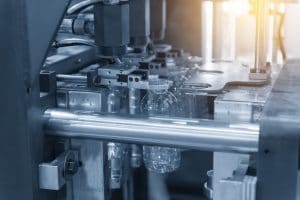 Virtually all industries rely on the efficient and reliable transfer of heat, such as thermal management for electrical enclosures. Some, however, depend on that ability, such as the molding industry. Therefore, the implementation of advanced heat exchangers that can transfer high levels of heat with minimal energy requirements benefit such industries the most. For example, plastic and other molding facilities are increasingly turning to thermal pins to streamline their production process and lower overhead costs. Combining the advantages of advanced heat exchanger technology with the ability to fit nearly all types of molding equipment, thermal pins have significantly improved how plastic molding companies operate.
Virtually all industries rely on the efficient and reliable transfer of heat, such as thermal management for electrical enclosures. Some, however, depend on that ability, such as the molding industry. Therefore, the implementation of advanced heat exchangers that can transfer high levels of heat with minimal energy requirements benefit such industries the most. For example, plastic and other molding facilities are increasingly turning to thermal pins to streamline their production process and lower overhead costs. Combining the advantages of advanced heat exchanger technology with the ability to fit nearly all types of molding equipment, thermal pins have significantly improved how plastic molding companies operate.
How Thermal Pins Work
- Thermal pins are specialized heat pipes designed to fit into various types of molding equipment, including both injection and extrusion models. Rather than being attached to electrical enclosures, thermal pins can be fitted to any existing core. Like more conventional heat pipes, they rapidly remove heat to allow molds to cool down faster and boost yield times.
- The processes by which thermal pins remove mold heat are the same processes traditional heat pipes use to prevent electrical overheating, using water as the cooling fluid. This brings the benefits of liquid cooling to small cores that have been previously inaccessible to it, which can help plastic molding companies save costs and improve cycle times.
- Besides more efficient heat transfer, thermal pins also provide more uniform cooling results. Heat pipe technology makes them isothermal, meaning they can transfer high levels of heat evenly by effectively maintaining a constant temperature. This allows for more consistent, high-quality yields as well as faster yield times and lower overall costs.
To learn more about how thermal pins benefit the plastic molding industry, call Noren Thermal, Inc. in Taylor, TX, at 866-936-6736.







